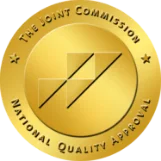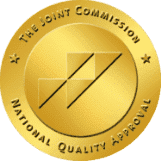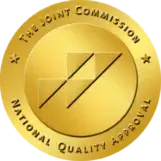Ever heard a really good joke about polio? Or made a casual reference to someone having
00:04
hepatitis? Or maybe teased your buddy by saying he has muscular dystrophy?
00:07
Of course you have never done that, because you are not a terrible person. You'd never
00:10
make fun of someone for having a physical illness, but folks make all kinds of offhand
00:15
remarks about people having mental illnesses and never give it a second thought.
00:18
How often have you heard a person say that someone's psycho, or schizo, or bipolar, or
00:23
OCD? I can pretty much guarantee that the people who used those terms had no idea what they actually meant.
00:29
We've talked about how psychological disorders and the people who have them have often been stigmatized.
00:33
But at the same time, we tend to minimize those disorders, using them as nicknames for
00:38
things that people do, think, or say, that may not exactly be universal, but are still basically healthy.
00:43
And we all do it, but only because we don't really understand those conditions.
00:48
But that's why we're here, because as we go deeper into psychological disorders, we get
00:52
a clearer understanding of their symptoms, types, causes, and the perspectives that help explain them.
00:58
And some of the most common disorders have their root in an unpleasant mental state that's
01:01
familiar to us all: anxiety.
01:04
It's a part of being human, but for some people it can develop into intense fear, and paralyzing
01:09
dread, and ultimately turn into full-fledged anxiety disorder.
01:13
Defining psychological disorders again: a deviant, distressful, and dysfunctional pattern
01:17
of thoughts, feelings, or behaviors that interferes with the ability to function in a healthy way.
01:22
So when it comes to anxiety, that definition is the difference between the guy you probably
01:26
called phobic because he didn't like Space Mountain as much as you did, and the person
01:31
who truly can't leave their house for fear of interacting with others.
01:34
It's the difference between the girl who's teased by her friends as being OCD because
01:38
she does her laundry every night and the girl who has to wash her hands so often that they bleed.
01:42
Starting today, you're going to understand all of those terms you've been using.
01:56
We commonly equate anxiety with fear, but anxiety disorders aren't just a matter of fear itself.
02:00
A key component is also what we do to get rid of that fear.
02:03
Say someone almost drowned as a kid and is now afraid of water.
02:06
A family picnic at the river may cause that anxiety to bubble up, and to cope, they may
02:11
stay sequestered in the car, less anxious but probably still unhappy while the rest
02:16
of the family is having fun.
02:17
So, in clinical terms, anxiety disorders are characterized not only by distressing, persistent
02:22
anxiety but also often by the dysfunctional behaviors that reduce that anxiety.
02:27
At least a fifth of all people will experience a diagnosable anxiety disorder of some kind
02:32
at some point in their lives. That is a lot of us.
02:35
So I want to start out with a condition that used to be categorized as an anxiety disorder
02:38
but is now considered complex enough to be in a class by itself, Obsessive-Compulsive
02:43
Disorder or OCD.
02:44
You probably know that condition is characterized by unwanted repetitive thoughts, which become
02:49
obsessions, which are sometimes accompanied by actions, which become compulsions.
02:53
And it is a great example of a psychological disorder that could use some mental-health myth busting.
02:57
Being neat, and orderly, and fastidious does not make you OCD.
03:02
OCD is a debilitating condition whose sufferers take normal behaviors like, washing your hands,
03:07
or double checking that you turned off the stove and perform them compulsively.
03:12
And they often use these compulsive, even ritualistic behaviors to relieve intense and unbearable anxiety.
03:18
So, soon they're scrubbing their hands every five minutes, or constantly checking the stove,
03:22
or counting the exact number of steps they take everywhere they go.
03:25
If you're still unclear about what it means for disorders to be deviant, distressful and
03:29
dysfunctional, OCD might help you understand.
03:31
Because it is hard to keep a job, run a household, sit still, or do much of anything if you feel
03:36
intensely compelled to run to the kitchen twenty times an hour.
03:40
And both the thoughts and behaviors associated with OCD are often driven by a fear that is itself
03:45
obsessive, like if you don't go to the kitchen right now your house will burn down and your
03:48
child will die which makes the condition that much more distressing and self-reinforcing.
03:52
There are treatments that help OCD including certain kinds of psychotherapy and some psychotropic drugs.
03:58
But the key here is that it is not a description for your roommate who cleans her bathroom
04:01
twice a week, or the guy in the cubicle next to you, who only likes to use green felt tip pens.
04:05
And even though OCD is considered its own unique set of psychological issues, the pervasive
04:10
senses of fear, worry, and loss of control that often accompany it, have a lot in common
04:15
with other anxiety disorders.
04:17
The broadest of these is Generalized Anxiety Disorder or GAD.
04:21
People with this condition tend to feel continually tense and apprehensive, experiencing unfocused,
04:26
negative, and out-of-control feelings.
04:29
Of course feeling this way occasionally is common enough, but feeling it consistently
04:32
for over six months - the length of time required for a formal diagnosis - is not.
04:37
Folks with GAD worry all the time and are frequently agitated and on edge, but unlike
04:42
some other kinds of anxiety, patients often can't identify what's causing the anxiousness, so
04:46
they don't even know what to avoid.
04:48
Then there's Panic Disorder, which affects about 1 in 75 people, most often teens and young adults.
04:53
It's calling card is Panic Attacks or sudden episodes of intense dread or sudden fear that
04:59
come without warning.
05:00
Unlike the symptoms of GAD which can be hard to pin down, Panic Attacks are brief, well-defined,
05:06
and sometimes severe bouts of elevated anxiety.
05:08
And if you've ever had one, or been with someone who has, you know that they call these attacks
05:13
for good reason.
05:14
They can cause chest pains and racing heartbeat, difficulty breathing and a general sense that
05:19
you're going crazy or even dying. It's as awful as it sounds.
05:23
We've talked a lot about the body's physiological fight or flight response and that's definitely
05:27
part of what's going on here, even though there often isn't an obvious trigger.
05:31
There may be a genetic pre-disposition to panic disorder, but persistent stress or having
05:35
experienced psychological trauma in the past can also set you up for these attacks.
05:39
And because the attacks themselves can be downright terrifying, a common trigger for
05:43
panic disorder is simply the fear of having another panic attack.
05:47
How's that for a kick in the head?
05:48
Say you have a panic attack on a bus, or you find yourself hyperventilating in front of
05:52
dozens of strangers with nowhere to go to calm yourself down, that whole ordeal might
05:56
make you never want to be in that situation again, so your anxiety could lead you to start
05:59
avoiding crowded or confined places.
06:01
At this point the initial anxiety has spun of into a fear of anxiety which means, welcome
06:07
you've migrated into another realm of anxiety disorder, Phobias.
06:10
And again this is a term that's been misused for a long time to describe people who, say,
06:14
they don't like cats, or are uncomfortable on long plane trips.
06:18
Simply experiencing fear or discomfort doesn't make you phobic.
06:21
In clinical terms, phobias are persistent, irrational fears of specific objects, activities,
06:27
or situations, that also, and this is important, leads to avoidance behavior.
06:31
You hear a lot about fears of heights, or spiders, or clowns, and those are real things.
06:37
They're specific phobias that focus on particular objects or situations.
06:40
For example, the Chesapeake Bay Bridge in Maryland is a seven-thousand meter span that
06:44
crosses the Chesapeake Bay, if you want to get to or from Eastern Maryland that's pretty
06:49
much the only way to do it, at least in a car, but there are thousands of people who
06:53
are so afraid of crossing that bridge that they simply can't do it.
06:57
So, to accommodate this avoidance behavior, driver services are available.
07:01
For $25 people with Gephyrophobia, a fear of bridges, can hire someone to drive themselves, and their kids,
07:08
and dogs, and groceries across the bridge in their own car, while trying not to freak out.
07:13
But other phobias lack such specific triggers, what we might think of as social phobia, currently
07:18
known as social anxiety disorder, is characterized by anxiety related to interacting or being
07:23
seen by others, which could be triggered by a phone call, or being called on in class,
07:28
or just thinking about meeting new people.
07:30
So you can probably see at this point how anxiety disorders are related and how they
07:34
can be difficult to tease apart.
07:36
The same thing can be said about what we think causes them.
07:39
Because much in the same way anxiety can show up as both a feeling like panic, and a thought,
07:44
like is my kitchen on fire, there are also two main perspectives on how we currently view anxiety
07:50
as a function of both learning and biology.
07:52
The learning perspective suggests that things like, conditioning, and observational learning
07:57
and cognition, all of which we've talked about before best explain the source of our anxiety.
08:01
Remember our behaviorist friend, John B. Watson and his conditioning experiments with poor
08:05
little Albert, by making a loud scary noise every time you showed the kid a white rat,
08:09
he ended up conditioning the boy to fear any furry object, from bunnies, to dogs, to fur coats.
08:15
That conditioning used two specific learning processes to cement itself in Little Albert's young mind.
08:20
Stimulus Generalization, expanded or generalized his fear of the rat to other furry objects,
08:26
the same principle holds true if you were, like, attacked by your neighbours mean parrot
08:29
and subsequently fear all birds.
08:30
But then the anxiety is solidified through reinforcement, every time you avoid or escape
08:36
a feared situations, a pair of fuzzy slippers or a robin on the street, you ease your anxiety,
08:42
which might make you feel better temporarily, but it actually reinforces your phobic behavior,
08:46
making it stronger.
08:48
Cognition also influences our anxiety, whether we interpret a strange noise outside as a
08:52
hungry bear, or a robber, or merely the wind, determines if we roll-over and keep snoring,
08:58
or freak out and run for a kitchen knife.
08:59
And we might also acquire anxiety from other people through observational learning.
09:04
A parent who's terrified of water may end up instilling that fear in their child by
09:08
violently snatching them away from kiddie pools or generally acting anxious around park
09:12
fountains and duck ponds.
09:14
But there're also equally important biological perspectives. Natural selection, for instance,
09:18
might explain why we seem to fear certain potentially dangerous animals, like snakes, or why fears
09:23
of heights or closed in spaces are relatively common.
09:26
It's probably true that our more wary ancestors who had the sense to stay away from cliff
09:30
edges and hissing serpents were more likely to live another day and pass along their genes,
09:35
so this might explain why those fears can persist, and why even people who live in places
09:40
without poisonous snakes would still fear snakes anyway.
09:43
And then you got the genetics and the brain chemistry to consider.
09:46
Research has shown for example that identical twins, those eternal test subjects, are more
09:49
likely to develop phobias even if they're raised apart.
09:53
Some researchers have detected seventeen different genes that seem to be expressed with various
09:58
anxiety disorders.
09:59
So it may be that some folks are just naturally more anxious than others and they might pass
10:03
on that quality to their kids.
10:05
And of course individual brains have a lot to say about how they process anxiety.
10:10
Physiologically, people who experience panic attacks, generalized anxiety, or obsessive
10:14
compulsions show over-arousal in the areasof the brain that deal in impulse control
10:19
and habitual behaviors.
10:20
Now we don't know whether these irregularities cause the disorder or are caused by it, but
10:24
again, it reinforces the truism that everything that is psychological is simultaneously biological.
10:30
And that holds true for many other psychological disorders we'll talk about in the coming weeks,
10:34
many of which have names that you've also heard being misused in the past.
10:38
Today you learned what defines an anxiety disorder, as well as the symptoms of obsessive
10:43
compulsive disorder, generalized anxiety disorder, panic disorder and phobias.
10:46
You also learned about the two main perspectives on the origins of anxiety disorders, the learning
10:51
perspective and the biological perspective and hopefully you learned not to use "OCD"
10:56
as a punch line from now on.
10:58
Thanks for watching, especially to all of our Subbable subscribers who make Crash Course
11:01
available to them and also to everyone else.
11:04
To find out how you can become a supporter just go to subbable.com/crashcourse.
11:08
This episode was written by Kathleen Yale, edited by Blake de Pastino, and our consultant
11:12
is Dr. Ranjit Bhagwat.
11:13
Our director and editor is Nicholas Jenkins, the script supervisor is Michael Aranda who
11:17
is also our sound designer and the graphics team is Thought Cafe.




















